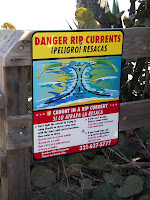
In the 17th century, natural philosophers (or scientists) worked to solve the problem of determining terrestrial longitude. They made observations of the eclipses of the satellites of Jupiter or the Moon from Paris, Aix-en-Provence, Tunis, Rome and other cities. The difference in times of the eclipse at various locations equaled the difference in terrestrial longitude.
These observers had numerous challenges to overcome—inaccurate time pieces and maps, poor quality instruments and the absence of a standardized procedure, and no prime meridian. Months in advance they began preparations for endeavors that could be fraught with problems like a cloud cover. Sometimes they counted the seconds to the midpoint of the eclipse by using their pulse or reciting the Ave Maria. Nevertheless, they made quality observations. What marvels would they have accomplished with a GPS.
I have always been fascinated by navigation especially since I have a poor sense of orientation myself. Friends and family hesitate to ride with me because we never know when or if we will arrive at our destination. Living on a coastline offers certain advantages—when I hit water, I know I am either on the Atlantic or the Mediterranean. But once I have to drive inland, I become disoriented. In terms of geographical coordinates, I am challenged. A GPS seemed to offer an obvious solution.
The GPS had a large map displayed on a screen attached to my windshield and a voice (either male or female) that issued verbal directions or recalculated the itinerary if I missed a turn. It could indicate not only destinations and “home” but also parking lots or service stations. What more could I want!
The first trial use took place in Orlando, a city where I have spent many hours lost on beltways wandering somewhere in the urban blend of communities. To test the GPS, we plugged in the coordinates of the IKEA store near the Millenia Mall, a route which was fairly simple (even for someone like me). But, oh misère. The GPS did not take us along the most logical route, but it led us through back roads and inner city neighborhoods before it deposited us in the vicinity of IKEA, which we found only because of the large size of the store. We had arrived at our destination but only after a circuitous route. I felt betrayed by my GPS.
We tested the GPS a second time on a trip this week to Coconut Grove and South Beach (Miami), which is basically a straight shoot south from our hometown. We drove along I-95, took the turnpike at Jupiter, and then passed the exit for Palm Beach. At Fort Lauderdale, the GPS insisted we had missed our turn. I ignored the frequent recommendations to exit. Was it my imagination or had my GPS become more insistent. Each time, it added an additional 10 minutes to our itinerary and announced, “Recalculating,” or directed us to make a U-turn. Did it know something we didn’t? Were there new roads or shortcuts? Or had someone reprogrammed the GPS . . . . Given that walls of construction in that part of Florida blocked my view of the coastline, I questioned my ability to navigate even these highways. . . .
To avoid hearing the GPS add an additional 10-minute leg to our journey, I exited in an area of abject poverty in North Miami. No road signs indicated how to return to the Interstate, and the GPS remained strangely silent. No option existed for a “get me out of here” or an “SOS” call. Instead, we asked directions at a service station. A Hispanic clerk who did not speak English explained we could continue south because there was no traffic, or we could return to the Interstate via a series of right and left turns. On the remainder of our trip, the GPS gave advice, which ranged from accurate to erroneous. This experience indicated to me that technology needed to be supplemented with a map or competent driver. Or, as my daughter suggested, get a chauffeur.
# # #








